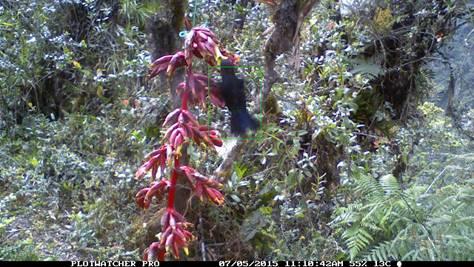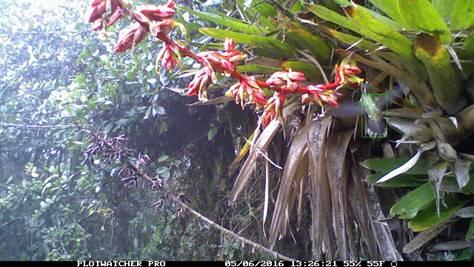Esteban A. Guevara
Other projects
19 Apr 2017
A Participative Approach to Study the Response of Plant – Bird Interactions to Climate Change in the Tropical Andes: Phase II
Understand how functional traits of birds and plants, related to pollination, vary across a disturbance gradient and develop a participative monitoring protocol to document those changes

High Andean forest are ecosystems of major regional importance due to 1) their outstanding biodiversity and endemism which attracts tourists thereby generating income and 2) the ecosystems services that they provide to human settlements nearby, among them; a remarkable capacity of fresh water catchment and supply and carbon storage. However, Andean forested landscapes face severe threats due to human activities that jeopardize their long-term persistence and functioning. Among these threats land-use conversion and slash-and-burn agriculture are probably the most detrimental practices for biodiversity. Beside its deleterious effects on biodiversity, these human practices may also have an effect on animal-mediated ecosystem process such as pollination, which is in turn critical for forest restoration in tropical forests. Although there is a consensus that pollinator communities and plant-pollinator interactions are susceptible to human-induced disturbances, how they respond to disturb is far from being fully understood.

Our projects aim to document and understand how human activities like forest fragmentation and fires affect ecosystem processes such as bird pollination, through the study of pollination networks. To achieve this, we rely on the development of a monitoring approach based on the involvement of local communities and the implementation of novel monitoring techniques that record plant-bird interactions. The project will take place in the north-western flanks of the Pichincha volcano in Ecuador which holds approximately 16 hummingbird species and at least 29 ornitophilous plant species.
Furthermore the area holds one of the two sub-populations of the Critical Endangered Black-breasted Puffleg, an endemic hummingbird to Ecuador. Therefore, in addition to developing a plant-hummingbird network we expect to collect further ecological data on this poorly known species. Ultimately we seek to provide guidance to landowners and decision-makers to apply management actions that prevent the loss of biodiversity and the associated ecological processes like pollination.